Last fall, the City and County of Denver unveiled Plow Tracker—a tech-savvy way for residents, as Mayor Michael Hancock puts it, to "see where the plows are and have been before heading out the door.” Currently, Denver Public Works has a fleet of 70 large plows that cover approximately 1,900 miles of main streets, as well as a team of 36 smaller, residential plows that deploy on side streets if enough snow has accumulated.
But have you ever wondered how Denver managed to clear its streets of inches—and sometimes, feet—of snow throughout its history?
Horse-drawn plows and wagons as well as human-powered shovels cleared streets through the early 1900s. By 1920, however, the City of Denver boasted that it had "117 touring cars and trucks in the service of the city," and that, after major storms, all dump trucks and tractors were brought into service, regardless of the department they belonged to.
"Thus, the city is able to put on the streets from twenty-five to thirty-five trucks in a day, and save the employment of an army of shovelers, which would be at work for a week if horses and wagons were used to haul away snow."
(Municipal Facts, November-December 1920, p. 10)
Plows with loaders were in use by the 1950s. The one pictured below was used to clear 15th and Stout Streets after a storm unleashed nine inches of snowfall on Denver in late January 1951. Snow was trucked to the Platte River.
The winter of 1973 in Denver is probably not remembered fondly, as the City had a fleet of...wait for it...two plows. Thankfully, more plows were ordered in 1974, although 41 of them didn't arrive until 1975 ("City Ready with New Snowplows, Denver Post, November 15, 1975).
The handling of snowstorm clean-up in Denver has even ended political careers.
When a blizzard delivered two feet of snow on Christmas Eve in 1982, ten to fifteen-foot snow drifts incapacitated Denver, and residents soon noticed an absence of deployed plows. With roads impassable, grocery stores ran out of perishable items and area hospitals implored anyone with a four-wheel-drive vehicle to help transport patients to emergency rooms. A Rocky Mountain News article accurately predicted the following:
"Denver won't elect its next mayor until spring, but already there is an emerging consensus among community political leaders that Mayor William H. McNichols' political career may have become a casualty of the Christmas Eve blizzard of 1982."
("Blizzard May Haunt McNichols," Rocky Mountain News, January 22, 1983")
The early 2000s saw two major storms—one that dropped nearly 32 inches of snow March 17-19, 2003, and another that produced almost 21 inches on December 20-21, 2006.
The latter emboldened Mayor John Hickenlooper to declare Denver's first-ever snow emergency parking ban. This practice—common in many major cities that receive snowfall during the winter—prohibits street parking on main thoroughfares and can also limit parking to one side of the street in residential areas.
Snow removal certainly has changed in Denver over the years. What began with horse-drawn plows and teams of shovelers has morphed into fleets of motorized plows that one can follow on a smartphone.
What will be next? Perhaps the next innovation is just a blizzard away.

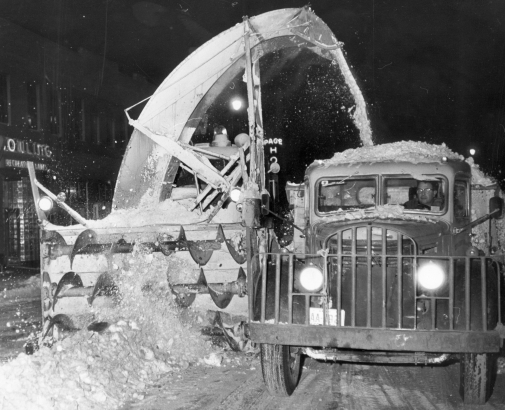
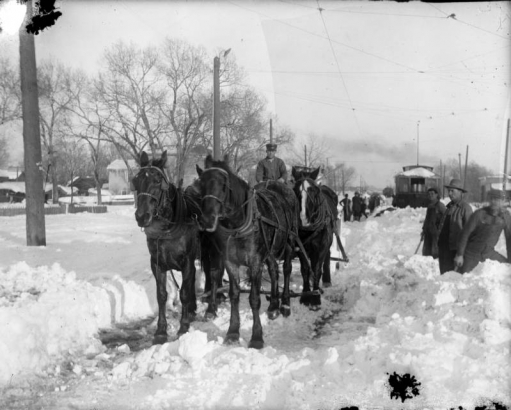
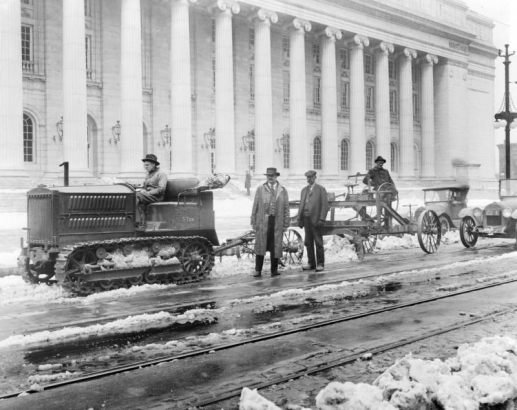
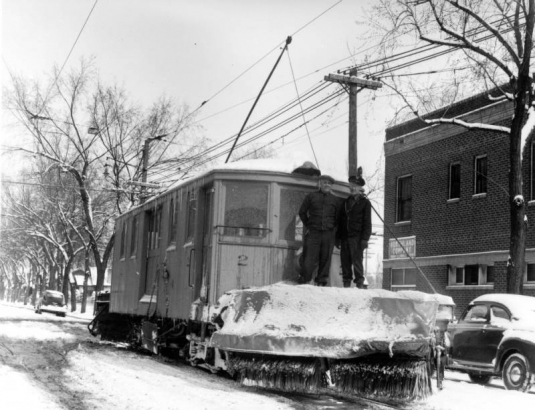
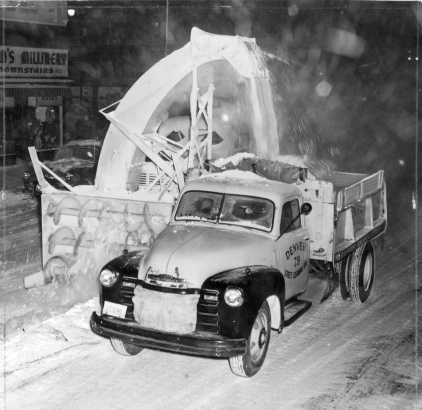


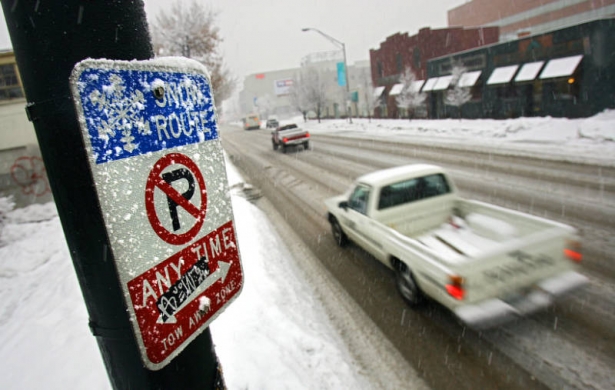
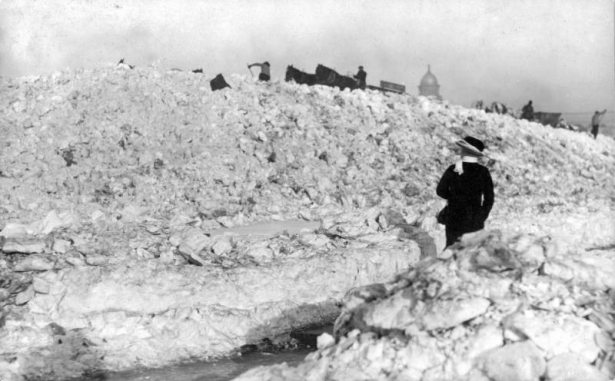
Comments
Thanks -- great article and
Thanks -- great article and photos! And timely, as we slog through a bit of snow this 1st weekend of March.
Thanks for reading, Patrick!
Thanks for reading, Patrick!
This makes us very
This makes us very appreciative of modern snow removal. I am old enough to remember seeing a sand truck drive slowly while two men with shovels riding in the back spread
the sand on the street.
Seems like a dangerous job!
Seems like a dangerous job! Thanks for reading and commenting, Larene!
great article i wish they go
great article i wish they go back to the the rock and sand it works better for the streets instead of that mag chloride its no good
Thanks for reading and
Thanks for reading and commenting, John!
A great piece. It helps to
A great piece. It helps to have the lens of history on such matters.
An unfortunate by product of street snow clearing can be seen even on this very day, March 6, 2019. City plowing throws snow, salt, and sand on the curb sidewalks on the west side of Colorado Blvd between 6th Avenue and 1st. Most of these property owners have built fences, some with no gates, along the street. Unfortunately, most do not clear their walks as required by city code. This failure occurs even though Colorado Blvd is a bus route. Denver Neighborhood Services, RTD, and the neighborhood organization could help pedestrians and bus riders, some of whom are in wheel chairs, by addressing this longstanding enforcement oversight. There is a myth that Colorado has no sidewalk on the west side. Not true. The sidewalk is partially covered with sand and dirt, another more servere violation of code.
Great story.
Great story.
Growing up here I remember a lot of road graders pushing snow to the side of the streets, but not many plows.
Those guys throwing sand out of the back of the trucks made perfect arcs on the streets that melted the snow every few feet to give traction on hills.
They stopped putting sand on the streets when it was found to be a significant source of the brown part of the brown cloud after it was ground into a fine dust by the tires of vehicles.
Thanks for reading and
Thanks for reading and reminiscing, Roger:)
That top picture says it's
That top picture says it's snow removal in 1960, and I guess that snowblower attachment looks like something from that era, but the truck looks like it's from the 1930s. I wonder if the City was using such old equipment back then?
I don't remember the 1973 snow, I guess it's for the better if the City only had two plows. It must have been tough to get around. I do remember the 1982 blizzard. I lived in Capitol Hill, parked on the street, and after the snow plow came through our narrow street, it left a ridge of snow and ice either side of its plowing path. I had to try to get enough momentum with my car to get over that ridge every time I had to pull out from a parking spot.
Add new comment